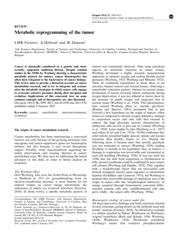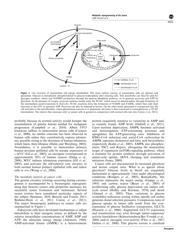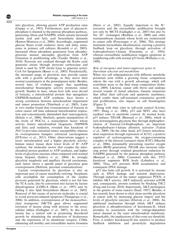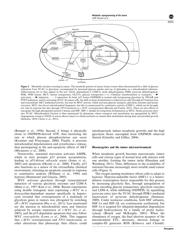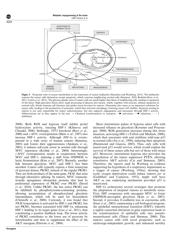Datasheet 搜索 > 逻辑芯片 > TI(德州仪器) > CD4011BM 数据手册 > CD4011BM 用户编程技术手册 1/13 页
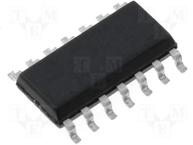
 器件3D模型
器件3D模型¥ 0.202
CD4011BM 用户编程技术手册 - TI(德州仪器)
制造商:
TI(德州仪器)
分类:
逻辑芯片
封装:
SOIC-14
描述:
TEXAS INSTRUMENTS CD4011BM 与非门, 4门, 2输入, 6.8 mA, 3V至18V, SOIC-14
Pictures:
3D模型
符号图
焊盘图
引脚图
产品图
CD4011BM数据手册
Page:
of 13 Go
若手册格式错乱,请下载阅览PDF原文件

REVIEW
Metabolic reprogramming of the tumor
LMR Ferreira
1
, A Hebrant
2
and JE Dumont
2
1
Life Sciences Department, Faculty of Sciences and Technology, University of Coimbra, Coimbra, Portugal and
2
Institute of
Interdisciplinary Research (IRIBHM), School of Medicine, Universite
´
Libre de Bruxelles, Campus Erasme Hospital, Brussels,
Belgium
Cancer is classically considered as a genetic and, more
recently, epigenetic multistep disease. Despite seminal
studies in the 1920s by Warburg showing a characteristic
metabolic pattern for tumors, cancer bioene rgetics has
often been relegated to the backwaters of cancer biology.
This review aims to provide a historical account on cancer
metabolism research, and to try to integrate and system-
atize the metabolic strategies in which cancer cells engage
to overcome selective pressures during thei r inception and
evolution. Implications of this renovated view on some
common concepts and in therapeutics are also discussed.
Oncogene (201 2) 31 , 3999–4 011; doi:10.1038/onc.2011.5 76;
published online 9 January 2012
Keywords: cancer; metabolism; microenvironment;
evolution
The origins of cancer metabolism research
Cancer metab olism has been experiencing a renovated
interest, not only because of the growing awareness that
oncogenes and tumor-suppressor genes are bioenergetic
arbiters, but also because it may reveal therapeutic
targets. Notably, some misconceptions regarding the
initial observations and ensuing theories in cancer
metabolism exist. We thus start by addressing the initial
advances in this field, in order to better analyze its
evolution.
The Warburg effect
Otto Warburg, who won the Nobel Prize in Physiol ogy
or Medicine in 1931 for groundbreaking work on
electron-transferring enzymes, is most famous for his
seminal studies on cancer energy metabolism, the
milestones of which are reviewed elsewhere (Ferreira,
2010). In those works, a specific metabolic pattern of
tumors was consistently observed. After some anecdotal
reports on metabolic reactions in tumor tissues,
Warburg developed a highly accurate manometrical
apparatus to measure oxygen and carbon dioxide partial
pressures (Warburg, 1923; Warburg and Minami, 1923).
Then, he conducted experiments in tissue slices of rat
sarcoma, human tumors and normal tissues, observing a
remarkably consistent pattern: whereas in normal tissues
production of lactate occurred almost exclusively during
oxygen deprivation, it was not ablated in tumor slices by
the presence of ample oxygen and surpassed that of
normal tissue (Warburg et al., 1924). This phenomenon,
later termed Warburg effect or ‘aerobic glycolysis’
(Racker and Spector, 1981), prompted him to put
forward a first hypothesis on the origin of tumors: when
tissues are subjected to chronic oxygen deficiency, damage
to respiration occurs and only cells that succeed to
achieve the high glycolytic activity characteristic of
embryonic cells survive to give rise to a tumor (Warburg
et al., 1924). Later studies by him (Warburg et al.,1927)
and others (Cori and Cori, 1925a, 1925b) confirmed that
solid tumors presented higher glucose uptake and lactate
extrusion than healthy tissues in vivo.Duringthe
following years, it became clear that aerobic glycolysis
was not restricted to tumors (Warburg, 1929), leading
Warburg to include in his hypothesis that, in tumors, a
damage to respiration was irreversible and transmitted at
each cell doubling (Warburg, 1930). It was not until the
1950s that the shift from respiration to fermentation in
fully aerated conditions could be confirmed in pure cancer
cell cultures (Warburg and Hiepler, 1952). This, together
with a breakthrough report that rat myocardial cells
formed malignant tumors upon exposure to intermittent
hypoxia (Goldblatt and Cameron, 1953), led Warburg to
propose that irreversible damage of respiration was at the
origin of cancer cells: the ‘morphological inferiority’ of
energy acquired through fermentation converted differ-
entiated somatic cells into ‘undifferentiated cells that
grow wildly—the cancer cells’ (Warburg, 1956a).
Bioenergetic etiology of cancer under fire
All these innovative findings and bold assertions elicited
several criticisms casting doubt on the methods used and
results’ an alysis (Ferreira, 2010). An illustrative example
is a debate sparked by Sidney Weinhouse on Warburg’s
original hypothesis (Burk and Schade, 1956; Warburg,
1956b; Weinhouse, 1956). Weinhouse considered
Warburg’s claims that oxidative phosphorylation
Received 25 July 2011; revised 8 November 2011; accepted 9 November
2011; published online 9 January 2012
Correspondence: Dr LMR Ferreira, Life Sciences Department,
Faculty of Sciences and Technology, University of Coimbra, Rua
dos Estudos, Coimbra 3001-401, Portugal
E-mail: leonardo_m_r_ferreira@yahoo.com or Dr JE Dumont, In-
stitute of Interdisciplinary Research (IRIBHM), School of Medicine,
Universite Libre de Bruxelles, Campus Erasme Hospital, Route de
Lennik 808, CP 602, B 1070 Brussels, Belgium.
E-mail: jedumont@ulb.ac.be
Oncogene (2012) 31, 3999–4011
&
2012 Macmillan Publishers Limited
All rights reserved 0950-9232/12
www.nature.com/onc
器件 Datasheet 文档搜索
AiEMA 数据库涵盖高达 72,405,303 个元件的数据手册,每天更新 5,000 多个 PDF 文件
